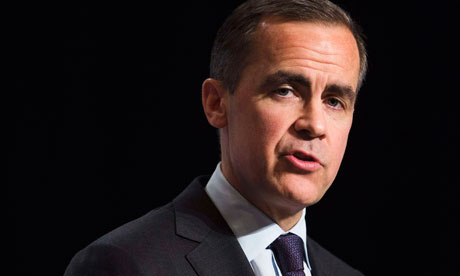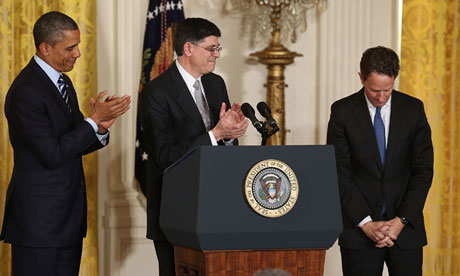The Government is trying to quantify social isolation amid health fears
Sunday, 13 January 2013
Government officials have been ordered to find out exactly how lonely Britain's population is, amid concerns that "the most isolated generation ever" will overwhelm the NHS.
The Department of Health is attempting to measure the extent of "social
isolation" in the UK, after warnings that it has sparked spiralling levels of
illnesses including heart disease, high blood pressure, dementia and
depression.
Research has revealed that loneliness is a growing problem in the UK – particularly among the elderly – with one in three admitting that they sometimes feel lonely. Among older people, more than half live alone, 17 per cent are in contact with family, friends and neighbours less than once a week, and almost five million say the television is their main form of company.
However, the trend is expected to worsen in the coming years. The Office for National Statistics disclosed last year that the number of Britons living alone has risen to a record 7.6 million – one million more than in 1996 and amounting to almost one in three households.
But beyond the personal problems the "loneliness epidemic" presents, ministers have been put on alert over its wider impact – and financial costs. Loneliness is blamed for piling more pressure on to health and social care services, because it can increase the risk of complaints including heart disease and blood clots. Experts also believe it encourages people to exercise less and drink more – and ultimately go to hospital more often and move into residential care at an earlier stage.
The Government's attempts to measure social isolation among people using health and social care will increase the pressure on the NHS and councils to tackle the problem now – to slash millions from their spending on the effects of loneliness in the future.
The care and support minister, Norman Lamb, said: "For the first time, we will be aiming to define the extent of the problem by introducing a national measure for loneliness. We will be encouraging local authorities, NHS organisations and others to get better at measuring the issue in their communities. Once they have this information, they can then come up with the right solutions to address loneliness and isolation."
It is the latest in a number of attempts to gauge, and change, the national mood: Tony Blair appointed the LSE academic Lord Layard as his "happiness tsar", while David Cameron has previously tried to measure people's well-being. In each case, the driving aim was to cut health and social welfare costs by making people feel better about their lot.
An official guide on combating isolation, issued to local authorities by the organisation Campaign to End Loneliness, says: "Tackling loneliness will reduce the demand for costly health care and, by reconnecting individuals to their communities, it will give renewed access to older people's economic and social capital." The guide points out that a scheme in Essex where lonely people were "befriended" by volunteers cost £80 per person but produced annual savings of £300 per person. Another project directing older people to local services cost £480 but realised savings of £900 per person.
Anne Hayden, a Dorset GP, saved more than £80,000 in costs for six patients who were "high users of NHS services" with a befriending scheme to boost their emotional well-being. David McCullough, chief executive of the WRVS (formerly the Women's Royal Voluntary Service), said: "It's to the benefit of not only the patient, but also the NHS as a whole, that GPs spot the early warning signs of isolation and refer patients to services such as befriending or community centres."
Case study
Win Noble was a nurse who had to give up work to care for her husband after he had a stroke and heart attack.
"It's not until you're on your own that you feel miserable. My husband died in 2001. I had nursed him for 20 years.
"In 2005, my next-to-oldest daughter died and then so did my youngest daughter. I was on my own because the rest of the family don't live in the area and I'm partially disabled, so I can't really socialise. One of my other daughters is housebound, one lives in Rhyl and one in Skegness and my only son is in Sleaford. I hadn't seen my son for five years but he rings me and came down this week.
"I don't see the others. I used to read a lot of books, from the mobile library, and I do a lot of puzzles just to keep occupied.
"Age Concern contacted me and suggested a craft class. After a few weeks they started to get a group together to play games like Scrabble and have quizzes. I got really involved and really enjoyed it. I became a volunteer and people needed me again."
Rachael Bentham
Research has revealed that loneliness is a growing problem in the UK – particularly among the elderly – with one in three admitting that they sometimes feel lonely. Among older people, more than half live alone, 17 per cent are in contact with family, friends and neighbours less than once a week, and almost five million say the television is their main form of company.
However, the trend is expected to worsen in the coming years. The Office for National Statistics disclosed last year that the number of Britons living alone has risen to a record 7.6 million – one million more than in 1996 and amounting to almost one in three households.
But beyond the personal problems the "loneliness epidemic" presents, ministers have been put on alert over its wider impact – and financial costs. Loneliness is blamed for piling more pressure on to health and social care services, because it can increase the risk of complaints including heart disease and blood clots. Experts also believe it encourages people to exercise less and drink more – and ultimately go to hospital more often and move into residential care at an earlier stage.
The Government's attempts to measure social isolation among people using health and social care will increase the pressure on the NHS and councils to tackle the problem now – to slash millions from their spending on the effects of loneliness in the future.
The care and support minister, Norman Lamb, said: "For the first time, we will be aiming to define the extent of the problem by introducing a national measure for loneliness. We will be encouraging local authorities, NHS organisations and others to get better at measuring the issue in their communities. Once they have this information, they can then come up with the right solutions to address loneliness and isolation."
It is the latest in a number of attempts to gauge, and change, the national mood: Tony Blair appointed the LSE academic Lord Layard as his "happiness tsar", while David Cameron has previously tried to measure people's well-being. In each case, the driving aim was to cut health and social welfare costs by making people feel better about their lot.
An official guide on combating isolation, issued to local authorities by the organisation Campaign to End Loneliness, says: "Tackling loneliness will reduce the demand for costly health care and, by reconnecting individuals to their communities, it will give renewed access to older people's economic and social capital." The guide points out that a scheme in Essex where lonely people were "befriended" by volunteers cost £80 per person but produced annual savings of £300 per person. Another project directing older people to local services cost £480 but realised savings of £900 per person.
Anne Hayden, a Dorset GP, saved more than £80,000 in costs for six patients who were "high users of NHS services" with a befriending scheme to boost their emotional well-being. David McCullough, chief executive of the WRVS (formerly the Women's Royal Voluntary Service), said: "It's to the benefit of not only the patient, but also the NHS as a whole, that GPs spot the early warning signs of isolation and refer patients to services such as befriending or community centres."
Case study
Win Noble was a nurse who had to give up work to care for her husband after he had a stroke and heart attack.
"It's not until you're on your own that you feel miserable. My husband died in 2001. I had nursed him for 20 years.
"In 2005, my next-to-oldest daughter died and then so did my youngest daughter. I was on my own because the rest of the family don't live in the area and I'm partially disabled, so I can't really socialise. One of my other daughters is housebound, one lives in Rhyl and one in Skegness and my only son is in Sleaford. I hadn't seen my son for five years but he rings me and came down this week.
"I don't see the others. I used to read a lot of books, from the mobile library, and I do a lot of puzzles just to keep occupied.
"Age Concern contacted me and suggested a craft class. After a few weeks they started to get a group together to play games like Scrabble and have quizzes. I got really involved and really enjoyed it. I became a volunteer and people needed me again."
Rachael Bentham






